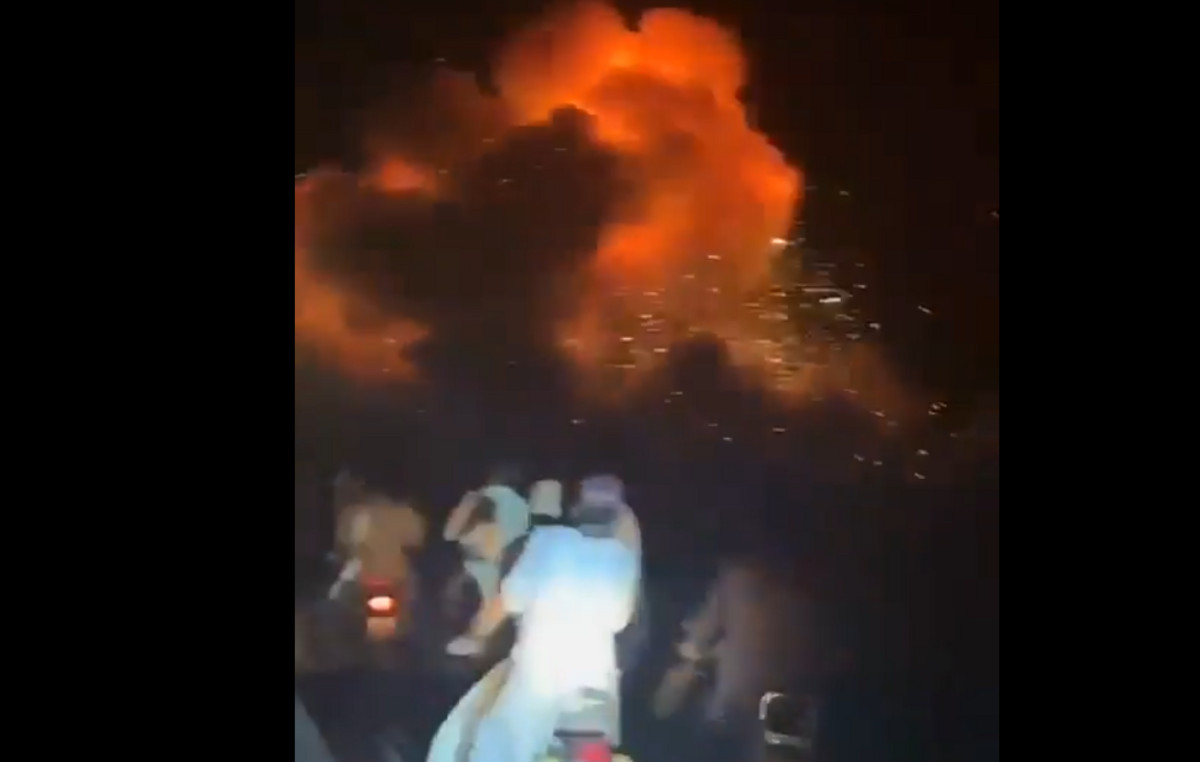The death toll from the earthquake that hit Turkey and Syria on Sunday night (5) and Monday morning (6) reached 20,451 this Thursday (9), according to authorities.
In Turkey, the death toll rose to at least 17,134, with 70,347 injured, according to the Turkish Emergency and Disaster Management Agency (AFAD).
The total death toll in Syria rises to 3,317 – including 1,970 in rebel-held areas in the northwest, according to the White Helmets civil defense group, and 1,347 deaths in government-controlled parts of Syria – according to Syrian state media. .
The total number of wounded in Syria across all affected territories rose to 5,245, with 2,295 in government-held areas and 2,950 in rebel-held areas.
At least 75,592 people were injured in Syria and Turkey, according to data from the Turkish government, the White Helmets and Syrian state media.
Massive rescue efforts are underway with the global community offering assistance in search and recovery operations.
Agencies have warned that fatalities from the disaster could still rise significantly.
Where was the tremor felt?
One of the strongest earthquakes to hit the region in a century jolted residents out of their sleep in the early hours of Monday morning, around 4am. [horário local].
The earthquake struck 23 km east of Nurdagi in the Turkish province of Gaziantep at a depth of 24.1 km, the United States Geological Survey (USGS) said.
A series of aftershocks reverberated through the region in the immediate hours after the initial incident.
A magnitude 6.7 aftershock occurred 11 minutes after the first quake, but the largest aftershock, which measured a magnitude of 7.5, occurred about nine hours later, according to the USGS.
This magnitude 7.5 aftershock, which occurred about 95 kilometers north of the initial quake, is the strongest of more than 100 aftershocks recorded so far.
Rescuers are now racing against time and the elements to pull survivors out of the rubble on both sides of the border.
More than 5,700 buildings in Turkey have collapsed, according to the country’s disaster agency.
Monday’s earthquake was also one of the strongest Turkey has experienced since the last century — a magnitude 7.8 earthquake struck the east of the country in 1939, resulting in more than 30,000 deaths, according to the USGS.
Why was he so fatal?
Several factors contributed to making this earthquake so deadly: one of them is the time of day it occurred.
With the earthquake occurring early in the morning, many people were in their beds when it happened and are now trapped under the rubble of their homes.
Furthermore, with a cold and wet weather system moving through the region, the poor conditions made access to the affected areas more complicated and rescue and recovery efforts on both sides of the border significantly more challenging after the teams arrived.
Temperatures are already bitterly low, but are expected to drop several degrees below zero in the coming days.
A low pressure area currently looms over Turkey and Syria.
As this progresses, it will bring in “significantly cooler air” from central Turkey, according to the senior meteorologist at the CNN Britley Ritz. This Thursday (9), the forecast drops to -6ºC.
With scattered showers and snow in the region, the severe climate puts the lives of those trapped under the rubble at risk of hypothermia – who have gone days without food and water.
Meanwhile, authorities urged residents to leave the buildings for their own safety amid concerns of more aftershocks.
Why did so many buildings fall?
With so much damage in both countries, many are starting to ask questions about the role local infrastructure may have played in the tragedy.
“What is most impressive are the types of collapses – what we call a pancake collapse – which is the type of collapse that we engineers don’t like to see,” said Mustafa Erdik, a professor of seismic engineering at Bogazici University in Istanbul. .
“In such collapses, it is difficult and very tragic to save lives. This makes it very difficult for search and rescue teams to operate.”
erdik said to CNN that images of widespread destruction and debris indicate “that there are highly variable qualities of designs and construction”.
He says the type of structural failures after an earthquake are usually partial collapses. “Total collapse is something you always try to avoid both in code and in actual design,” he added.
USGS Structural Engineer Kishor Jaiswal told the CNN on Tuesday that Turkey has experienced significant earthquakes in the past, including an earthquake in 1999 that struck southwest Turkey and killed more than 14,000 people.
Because of this, he said, many parts of Turkey have regional building regulations to ensure that building projects can withstand these types of events.
But not all buildings were built to modern Turkish seismic standards, Jaiswal said.
Deficiencies in design and construction, especially in older buildings, meant that many buildings did not withstand the severity of the shocks.
“If you are not designing these structures for the seismic intensity that they can experience in their lifetime, these structures may not perform well,” said Jaiswal.
Erdik also said he believed many of the buildings that collapsed were likely “built before 1999 or with older materials”.
How long can people survive under the rubble?
Despite the mounting challenges, a structural engineer and humanitarian coordinator urged first responders not to give up hope as survivors could be found even “weeks” after the massive earthquake hit the region.
Kit Miyamoto, president of the nonprofit Miyamoto Global Disaster Relief, also praised the community in Turkey that came together and “did their part” in the aftermath of the earthquake.
“The community, the citizens, they are the first line of defense,” he told CNN on Wednesday. “They dug up family, friends, neighbors.”
But other experts warn that the window for post-earthquake search and rescue is rapidly closing. Ilan Kelman, professor of disaster and health at University College London, said: “Normally few survivors are evacuated after 72 hours – but every life saved is essential and some people are released after many days.”
He added: “Time is always the enemy, as seen in Turkey and Syria. People die from immediate medical needs, such as bleeding to death or succumbing to crush injuries; due to aftershocks that bring down precarious structures with people underneath; and due to weather that dropped below zero at night and cooled during the day, people died of hypothermia. Many die for lack of food and water while awaiting rescue.”
Why do earthquakes happen?
Earthquakes occur on every continent in the world – from the highest peaks in the Himalayas to the lowest valleys like the Dead Sea to the extremely cold regions of Antarctica. However, the distribution of these earthquakes is not random.
The USGS describes an earthquake as “the shaking of the ground caused by a sudden landslide on a fault.
Stresses in the outer layer of the earth push the fault sides together. Stress builds and rocks suddenly slide, releasing energy in waves that travel through the Earth’s crust and cause the tremor we feel during an earthquake.
Earthquakes are measured using seismographs, which monitor the seismic waves that travel through the Earth after an earthquake.
Many may recognize the term “Richter Scale” that scientists previously used for many years, but nowadays they generally follow the Modified Mercalli Intensity Scale (MMI), which is a more accurate measure of the size of an earthquake, according to the USGS.
How big is a magnitude 7.8 earthquake?
The strength of an earthquake is known as magnitude.
The intensity of the tremor may vary depending on the local geography and topography and the depth of the earthquake. On the magnitude scale, each increase of a whole number translates to 32 times more energy.
On this occasion, the tremor of the magnitude 7.8 earthquake in southern Turkey could be felt as far as Israel and Lebanon, hundreds of kilometers away.
Turkey is no stranger to strong earthquakes, as it is situated along tectonic plate boundaries. Seven earthquakes of magnitude 7.0 or higher have hit the country in the last 25 years – but Monday’s was one of the strongest.
It is also the strongest earthquake to hit anywhere in the world since an 8.1 magnitude earthquake hit a region near the South Sandwich Islands in the southern Atlantic Ocean in 2021, although the remote location of that incident caused little damage. .
The February 6 earthquake is the strongest in Turkey in over 80 years – and one of the deadliest
Why are there so many earthquakes in Turkey?
The meteorologist of CNN and severe weather expert Chad Myers said, “we always talk about the epicenter, but in this case we should be talking about the epi-line.”
Two huge tectonic plates – the Arabian and the Eurasian – lie under the southeastern provinces of Turkey.
Along that fault line, “about 100 miles across, the land slipped,” Myers continued.
Seismologists refer to this event as a “slip” — “where plates touch and then suddenly slide sideways,” Myers said.
This is different from the Ring of Fire, which runs along the west coast of the United States.
In this zone, earthquakes and tsunamis are often caused by subduction – where one plate slides beneath the other. But in a “slip”, the plates move horizontally rather than vertically.
“It matters because buildings don’t want to go back and forth. And then the secondary waves start to come and go as well,” added Myers.
Due to the nature of this seismic event, the aftershocks can last for “weeks and months”, according to the meteorologist of the CNN Karen Maginnis.
Comparison with other earthquakes globally
Compared to other major earthquakes around the world, the 2011 Japan earthquake and tsunami – in which more than 22,000 people were killed or missing – registered a magnitude of 9.1.
That incident left a trail of widespread destruction after walls of water engulfed entire cities, washed away homes onto highways and caused the country’s worst-ever nuclear disaster.
It is estimated that a year earlier, in 2010, a magnitude 7.0 earthquake in Haiti killed between 220,000 to 300,000. Another 300,000 people were injured and millions were displaced.
In 2004, an earthquake with an estimated magnitude of 9.1 hit the coast of Sumatra, Indonesia, causing a tsunami that left 227,898 people dead or missing and presumed dead.
The strongest earthquake on record was a magnitude 9.5 in Chile in 1960, according to the USGS.
Source: CNN Brasil
Bruce Belcher is a seasoned author with over 5 years of experience in world news. He writes for online news websites and provides in-depth analysis on the world stock market. Bruce is known for his insightful perspectives and commitment to keeping the public informed.







